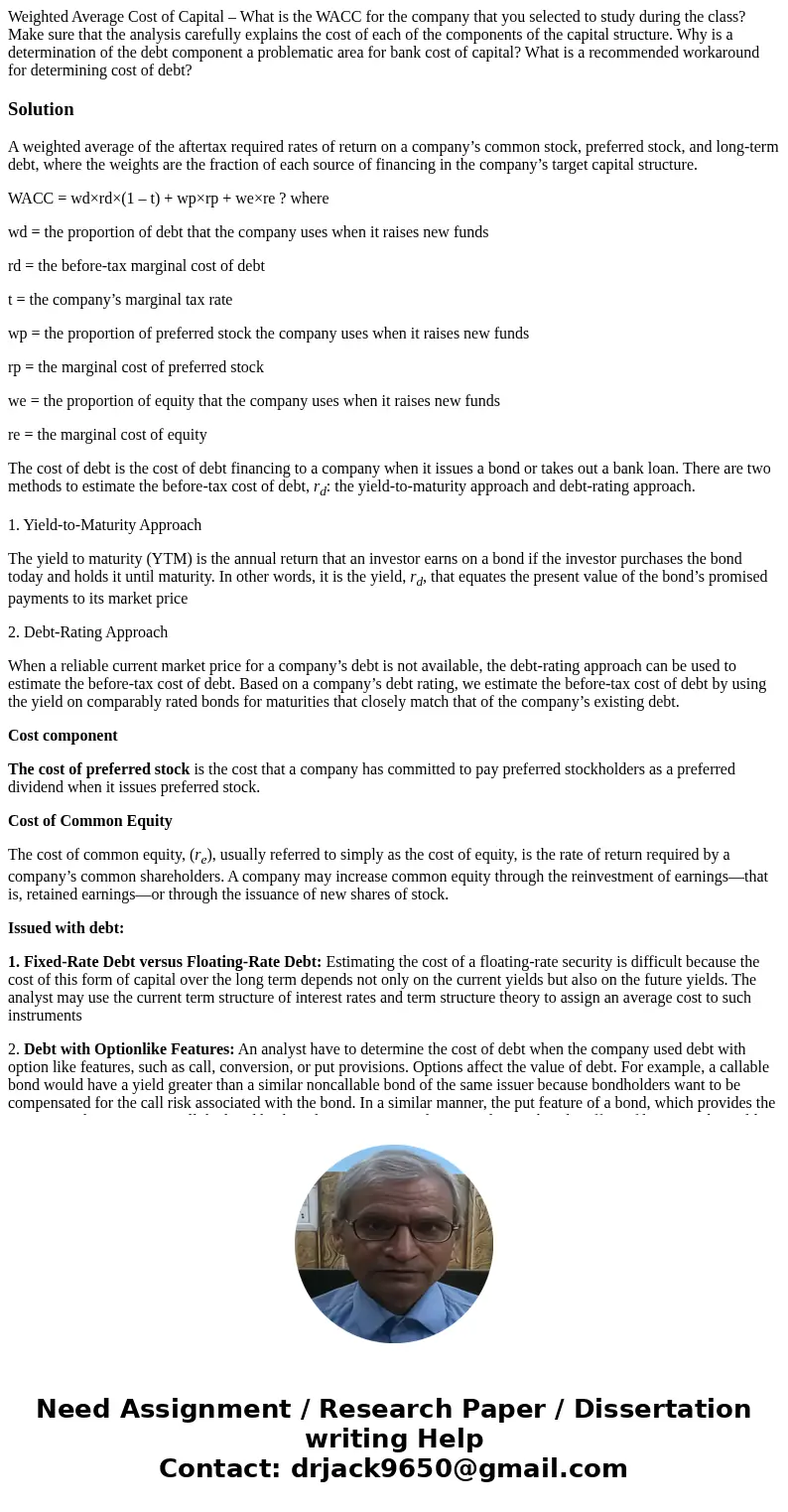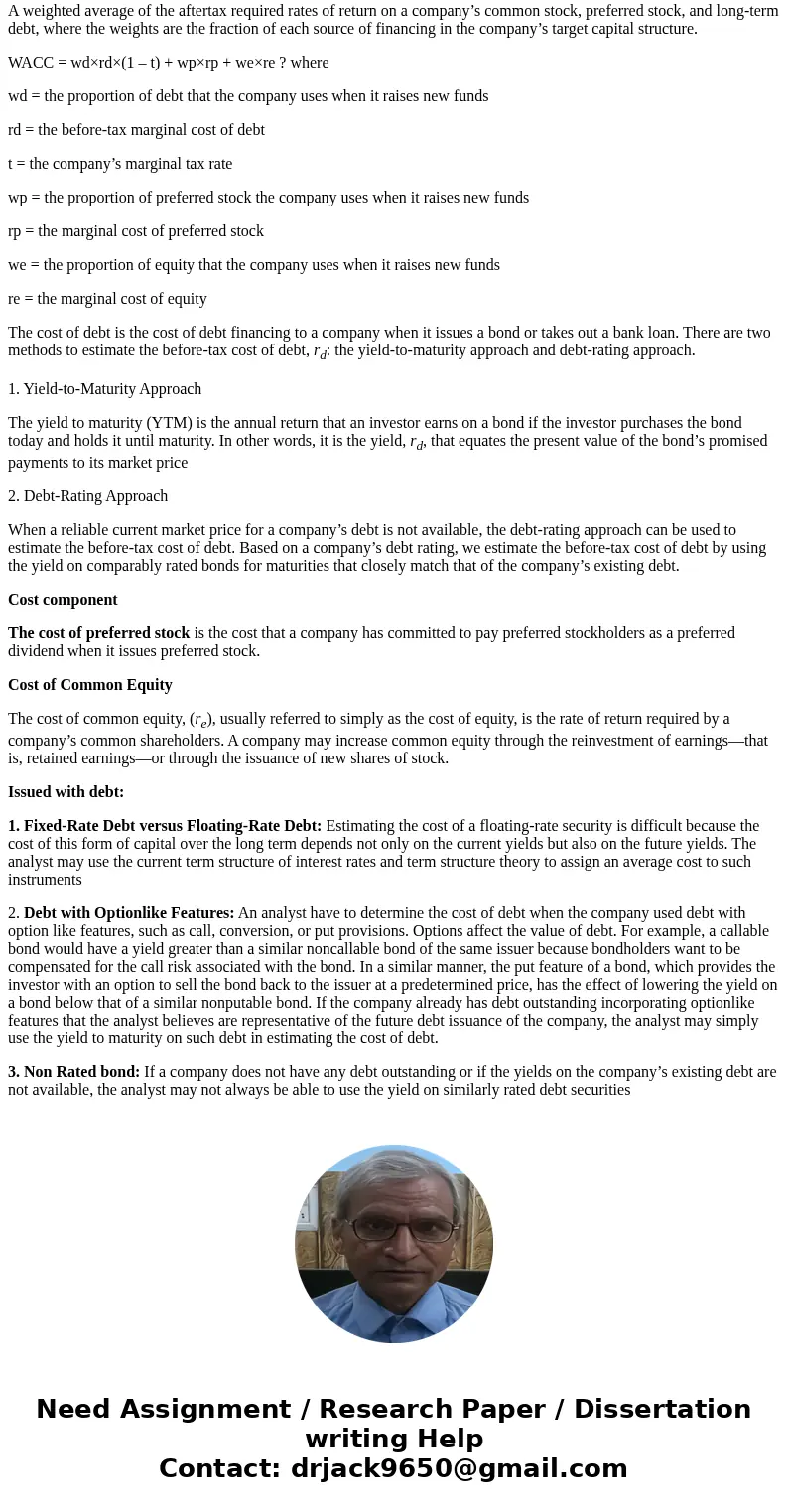Weighted Average Cost of Capital What is the WACC for the c
Weighted Average Cost of Capital – What is the WACC for the company that you selected to study during the class? Make sure that the analysis carefully explains the cost of each of the components of the capital structure. Why is a determination of the debt component a problematic area for bank cost of capital? What is a recommended workaround for determining cost of debt?
Solution
A weighted average of the aftertax required rates of return on a company’s common stock, preferred stock, and long-term debt, where the weights are the fraction of each source of financing in the company’s target capital structure.
WACC = wd×rd×(1 – t) + wp×rp + we×re ? where
wd = the proportion of debt that the company uses when it raises new funds
rd = the before-tax marginal cost of debt
t = the company’s marginal tax rate
wp = the proportion of preferred stock the company uses when it raises new funds
rp = the marginal cost of preferred stock
we = the proportion of equity that the company uses when it raises new funds
re = the marginal cost of equity
The cost of debt is the cost of debt financing to a company when it issues a bond or takes out a bank loan. There are two methods to estimate the before-tax cost of debt, rd: the yield-to-maturity approach and debt-rating approach.
1. Yield-to-Maturity Approach
The yield to maturity (YTM) is the annual return that an investor earns on a bond if the investor purchases the bond today and holds it until maturity. In other words, it is the yield, rd, that equates the present value of the bond’s promised payments to its market price
2. Debt-Rating Approach
When a reliable current market price for a company’s debt is not available, the debt-rating approach can be used to estimate the before-tax cost of debt. Based on a company’s debt rating, we estimate the before-tax cost of debt by using the yield on comparably rated bonds for maturities that closely match that of the company’s existing debt.
Cost component
The cost of preferred stock is the cost that a company has committed to pay preferred stockholders as a preferred dividend when it issues preferred stock.
Cost of Common Equity
The cost of common equity, (re), usually referred to simply as the cost of equity, is the rate of return required by a company’s common shareholders. A company may increase common equity through the reinvestment of earnings—that is, retained earnings—or through the issuance of new shares of stock.
Issued with debt:
1. Fixed-Rate Debt versus Floating-Rate Debt: Estimating the cost of a floating-rate security is difficult because the cost of this form of capital over the long term depends not only on the current yields but also on the future yields. The analyst may use the current term structure of interest rates and term structure theory to assign an average cost to such instruments
2. Debt with Optionlike Features: An analyst have to determine the cost of debt when the company used debt with option like features, such as call, conversion, or put provisions. Options affect the value of debt. For example, a callable bond would have a yield greater than a similar noncallable bond of the same issuer because bondholders want to be compensated for the call risk associated with the bond. In a similar manner, the put feature of a bond, which provides the investor with an option to sell the bond back to the issuer at a predetermined price, has the effect of lowering the yield on a bond below that of a similar nonputable bond. If the company already has debt outstanding incorporating optionlike features that the analyst believes are representative of the future debt issuance of the company, the analyst may simply use the yield to maturity on such debt in estimating the cost of debt.
3. Non Rated bond: If a company does not have any debt outstanding or if the yields on the company’s existing debt are not available, the analyst may not always be able to use the yield on similarly rated debt securities


 Homework Sourse
Homework Sourse